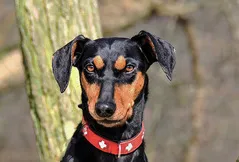
Papillon
The word papillon is a pretty little dog with distinctive erect ears. They are loving, playful, lively and alert.
Overall Status
| Height | 8 to 11 inches at the shoulder |
| Temperament | Friendly, Alert, Happy |
| Weight | 3 to 12 pounds |
| Life Expectancy | 13 to 17 years |
| Coat Color | Black, Black and Tan, Brown, Red, Silver, White |
| Barking Level | Frequent |
Quick Factors
| Playfulness | |
| Dog Friendly | |
| Exercise Need | |
| Grooming Needs | |
| Strangers Friendly | |
| Family Affectionate |
Daily Care
Grooming Tips
Papillons fairly are low maintenance when it comes to grooming, despite the high-maintenance look of their coat. They do not emit a dog odor, and when brushed two to three times per week, they only need to be bathed as needed. The coat is not prone to mats, but brushing helps to distribute the natural oils of the skin and keep the coat shiny and healthy. They need to be trimmed occasionally, but it can be done at home and hiring a professional groomer is not a necessity.The Papillon's ears should be checked on a regular basis for signs of wax buildup, irritation or infection. Clean them with a cotton ball and a veterinarian-approved cleanser; never use a cotton swab in a dog's ear canal. Teeth should be brushed on a weekly basis to prevent tartar buildup, promote gum health and keep bad breath at bay. Trim nails monthly if the dog does not wear the toenails down naturally outdoors.
Exercise Tips
Don’t short-change your Papillon’s exercise simply because they’re small: try to gauge its reactions to exercise and build a challenging exercise regimen that it can handle. When your pet is a puppy, be sure not to wear them out because of potential joint issues down the road. This is typically a bigger concern for larger dogs that will grow more than the Papillon does, but it’s something to keep in mind nonetheless.
Feeding Tips
Same like any other dog, a Papillon needs a well-balanced diet that offers varied nutrition. The only difference is that they need much less of it than your average-sized pooch! For your Papillon, choosepremium dry food for dogs.The kibble should be made from high-grade materials and formulated so to meet their unique needs. Usually, toy breed formulas are a perfect match: they offer the right ratio of nutrients for a dog of Papillon’s size and activity level. Additionally, you should make sure that the kibble is appropriate for their age: puppies, adults, and seniors have different requirements.In most cases, these dogs need only a half to one cup of kibble per day- it’s important not to overfeed them. Split their daily dose of kibble into two meals and stick to the manufacturer’s recommendations, as these dogs can become overweight quickly.Any diet should be appropriate to the dog’s age (puppy, adult, or senior). Treatscan be an important aid in training, but giving too many can cause obesity. Learn about whichhuman foodsare safe for dogs, and which are not. Check with your vet if you have any concerns about your dog’s weight or diet.Clean, fresh water should be available at all times.
Health Tips
The average life span of the Papillon is 13 to 16 years. Breed health concerns may include patellar luxation, black hair follicular dysplasia,congenital deafness,entropion,cataractsandprogressive retinal atrophy.
Trainability
The Papillon is a highly trainable breed. Not only that these petite dogs are quite smart, but they’re also eager to please their owners. This combination of traits ensures success with any training- of course, with the right approach. Reward-based training methods work best with the Papillon.Once they figure out that they’ll get a tasty treat or praise from their owner when they follow a command, they’ll become obedient little angels. However, make sure to be firm and consistent- positive reinforcement training works best when you position yourself as the leader of the pack.Most pet owners start with the basics, such as potty training and basic commands. But, with the Papillon, your training efforts don’t have to stop with apartment manners and obedience. They are active and athletic dogs, and you can utilize that in your training. Papillon excels in dog sports such asagilityor obedience competitions. With the right person by their side, there’s no limit to what these tiny dogs can learn and achieve!
History
Papillons were originally bred as charming and attentive companions for noblewomen, and for hundreds of years these enchanting lap warmers were great favorites in the royal courts of Europe.They appear in many portraits of long-ago queens and princesses painted by Europe’s most renowned artists. Rubens, Rembrandt, Goya, and Toulouse-Lautrec are among the masters who included Papillons in their paintings. Paps were developed in Renaissance times by crossing existing toy breeds with spaniels (the breed’s early ancestors were known as “dwarf spaniels”) in keeping with the era’s mania among nobles for miniaturized versions of their favorite breeds.The sporting-spaniel blood in the Pap’s background might explain why these dainty dynamos are among the more athletic and biddable toy dogs in the canine kingdom. With admirers like Madame de Pompadour, Louis XIV, and Marie Antoinette (whose Pap, named Thisbe, stood faithfully outside the prison where the hapless queen awaited beheading), the breed’s French connection is strong. But it was in the early breeding centers of Italy and Spain that Paps were refined and popularized. The AKC registered its first Papillon in 1915.






